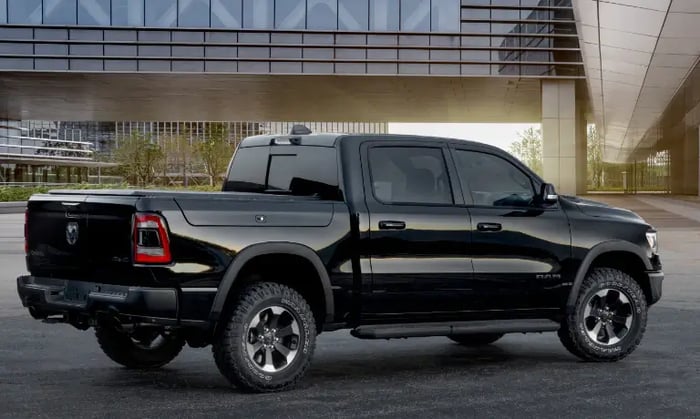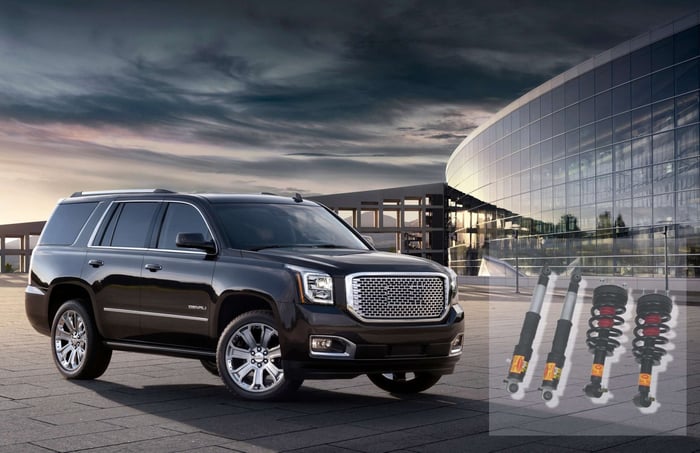Automakers use several types of suspension springs in the vehicles they make, but they all are designed for the same functions: keeping a car at the proper ride height and absorbing the impact of changes in road surfaces. In short, the springs in a car’s suspension play a critical role in keeping it safe to drive and comfortable for the driver.
However, these different types of springs can be radically different in how they are designed and how they work. As a result, which type of spring you choose can make a huge impact on the way your car feels, handles, stops, and more. In this article, we go into detail about how these different types of springs work and which ones may be right for you.
Types of Suspensions
To help you make a decision about the springs you buy, it’s important to understand the different types of suspension systems they fit into. The type of suspension your vehicle has – or you want it to have – is the first step in assessing which springs are the best option.
Passive vs. Active Suspension Systems
Suspension systems can be broken down into two major categories: passive and active systems. There is a world of difference between the two.
Passive suspensions use mechanical resistance to keep a vehicle at its proper ride height and make the ride more smooth. They are tuned – or, calibrated – to provide the optimal resistance for a vehicle’s size and weight with a balance of give and support. Passive systems have few, if any, moving parts.
Active systems, on the other hand, adjust the resistance of the suspension to respond to changes in the driving surface, weight distribution, speed, and more. To do this, they employ the use of sensors and a specialized computer that instruct the springs to increase or decrease resistance as needed. As you can probably guess, these systems are far more complicated with many moving parts.
Air Spring
Air springs are used in air suspensions – one of the most popular types of active suspension systems. Also called pneumatic springs, they use pressurized air to provide resistance. These springs are usually constructed with a flexible rubber “air bag” mounted on top of a metal strut.

How Air Springs Work
Air springs work by receiving and releasing pressurized air to adjust the resistance they provide. The process starts with ride height sensors at each wheel that measure how far off of the ground a vehicle is at each corner. This information is sent to a small computer called a suspension control module that determines whether or not a change in resistance is needed.
Then, the control module sends instructions to an air compressor that generates pressurized air for the springs and sends it to a reserve tank. Meanwhile, a manifold pumps air to springs that need it (or out of springs that need less air) through rubber hoses. Finally, the air pressure in each spring adjusts to keep the vehicle level and the ride smooth. This process is nearly instantaneous and happens constantly while the vehicle is moving.
Air Spring Pros and Cons
|
Air Spring Pros |
Air Spring Cons |
|
Comfortable driving experience |
Very expensive to repair or replace |
|
Can reduce wear and tear on other components |
Less resilient than passive struts |
|
May offer superior cornering |
Part of a complicated system with many components that can fail |
Leaf Springs
Leaf springs are a type of passive suspension spring made of several strips of metal stacked together and shaped in a semicircle. They are one of the oldest types of car suspension springs and were even featured on the Ford Model T. While their use on standard passenger cars started to fade in the 1970s, they are still frequently used on large trucks and other heavy equipment today.

How Leaf Springs Work
Each end of the leaf spring is mounted to opposite sides of the axle of a vehicle, rather than the wheels. They are curved slightly, with the curve facing down towards the road and mounted with leaf spring shackles. As a vehicle receives impact from the road or changes in weight distribution, the leaf springs spread that force out evenly to each side.
Leaf springs are perhaps the simplest design for suspension springs. As a result, they fall behind other types of springs in terms of comfort and responsiveness. But their simple design also makes them stronger and more robust than other springs – and much cheaper to fix or replace.
Leaf Springs Pros and Cons
|
Leaf Spring Pros |
Leaf Spring Cons |
|
Superior strength and support |
More limited range of motion at each wheel |
|
Can offer better traction in some situations |
Poor comfort and performance |
|
Inexpensive to repair and replace |
Can lead to axle wrap |
Coil Springs
Coil springs have become the dominant type of passive suspension spring over the past half-century. As you may have guessed by the name, coil springs are made from coiled metal and are mounted over metal struts.

A coil spring and strut assembly is mounted at each wheel of a vehicle, connecting it to the frame. They work just like any other spring and compress under pressure, absorbing much of the force of wheel travel before it reaches the frame.
Manufacturers tune coil springs to have the optimal amount of resistance for a specific vehicle. When tuned properly, they can provide a high-quality ride that can compare to that of an active suspension system. Since they operate independently of one another, they offer superior performance over leaf springs, especially in off-road situations.
Coil Spring Pros and Cons
|
Coil Spring Pros |
Coil Spring Cons |
|
Balance of comfort and durability |
Not for use on heavy-duty vehicles |
|
Easy and cheap to fix and replace |
Large range in quality between manufacturers |
|
Excellent for off-road handling |
Poorly-tuned coils result in a low-quality ride and can damage vehicles |
Air Springs vs. Leaf Springs vs. Coil Springs: Which is Best?
Ultimately, the choice of which type of spring – between air springs, leaf springs, and coil springs – is best depends on your vehicle and how you use it. Different types of springs are better for different types of applications.
- Choose air springs if: You insist on the highest-quality ride possible and you don’t mind spending several times more than you would on a passive system.
- Choose leaf springs if: You have a heavy-duty truck or van that needs robust, dependable support.
- Choose coil springs if: You want long-lasting performance and a comfortable ride without having to break the bank.
How to Buy the Best Suspension Springs for You
Beyond simply what type of suspension spring you install on your vehicle, the company you buy it from is an important decision. Your suspension is a critical component of your vehicle’s safety system and poorly-made or poor-fitting parts can endanger you and damage your vehicle.
When you buy replacement suspension parts, look for a company that offers the following:
- Individual design: Some companies use parts from one model car for other models if they fit “good enough.” Good companies design suspension components specifically for individual makes, models, and years to ensure a perfect fit and peak performance.
- Customer support: If you have issues with your new suspension parts, you’ll want a company that is there to help. Some companies outsource their customer service to third parties, while others have dedicated specialists who know their products and how they work.
- Quality guarantee: It’s difficult to tell the quality of suspension springs just from photos on the internet. However, when components include a warranty, it’s a sign that the company that sells it believes in the quality of the product and that you can, too.




